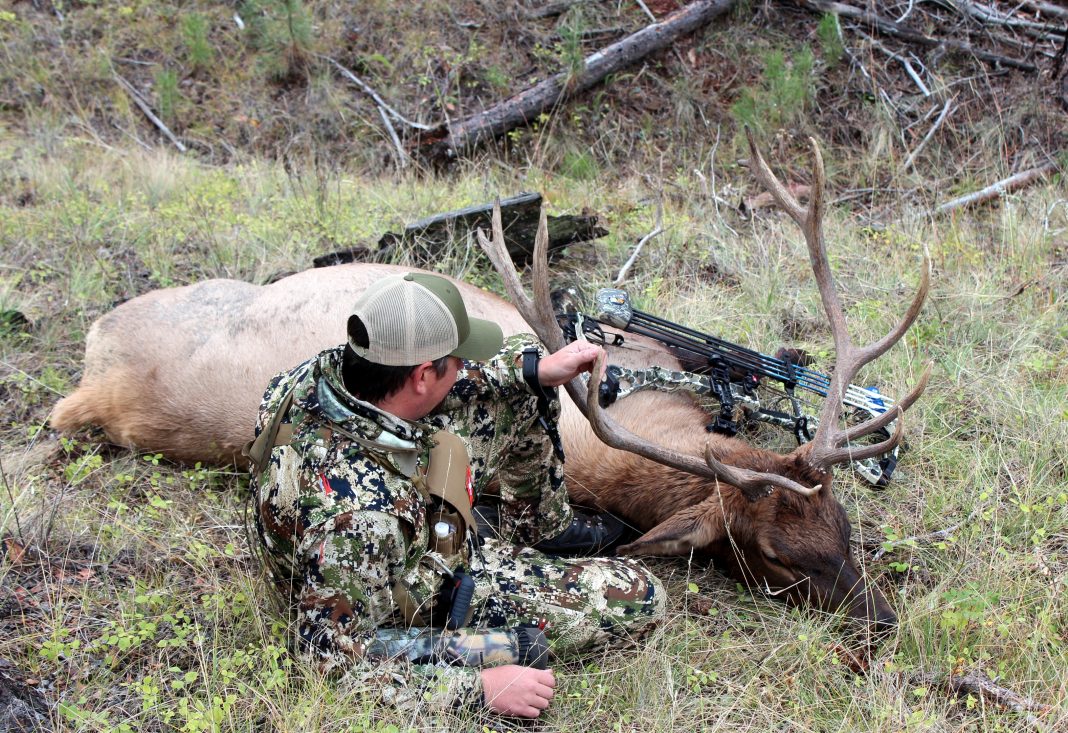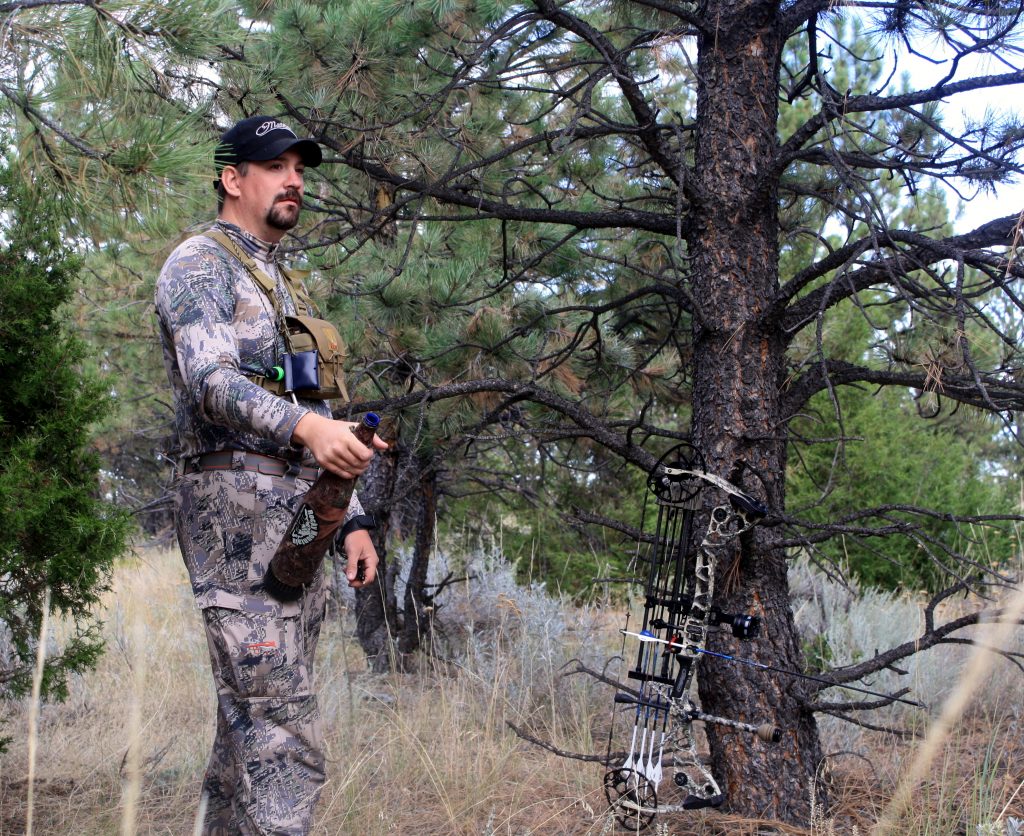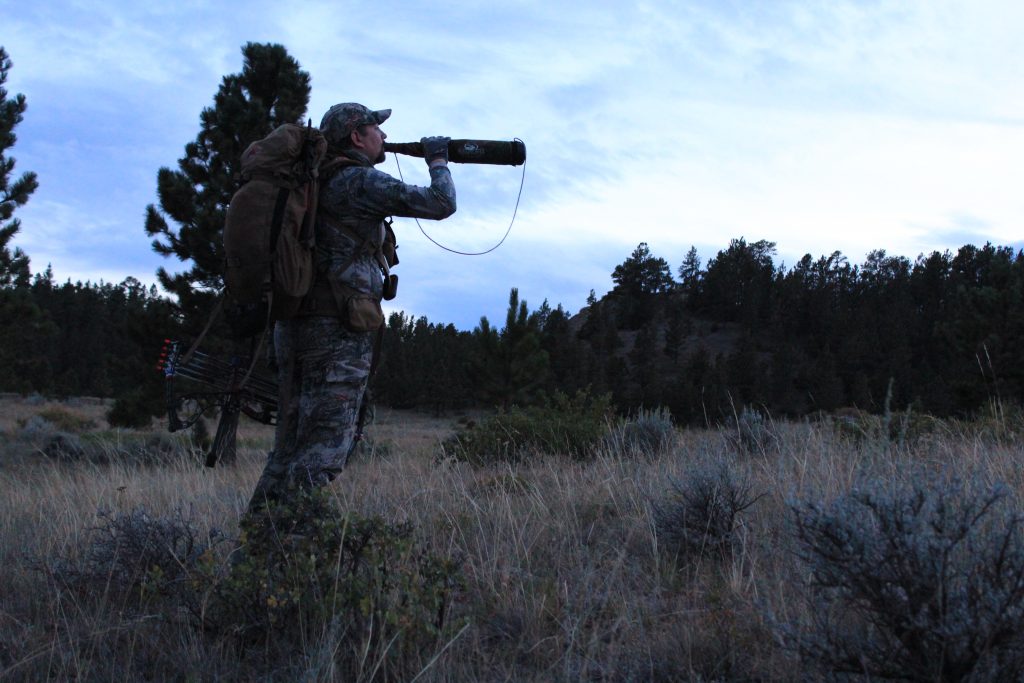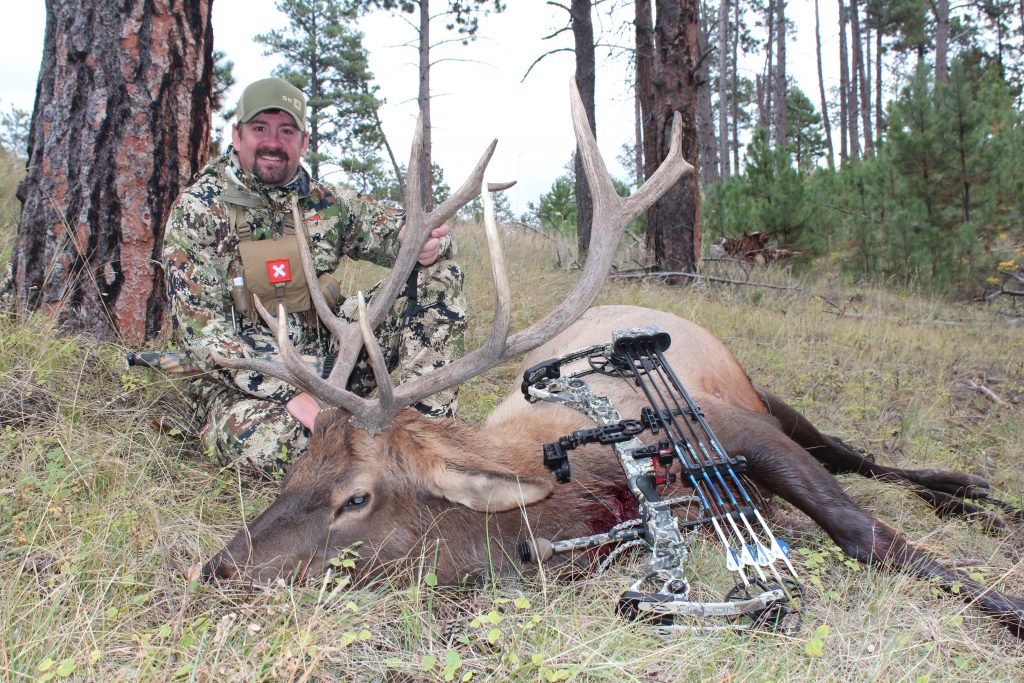Calling Elk
Although I haven’t been elk hunting my entire life, I have spent the last 9 coming up on 10 seasons spending the majority of my fall chasing elk with my bow. Over the years I have learned a ton of tactics and made plenty of mistakes and continue to do so year after year, but each year the mistakes get less and less.
One area that I have concentrated on is calling elk. I have had the privilege to work with one of the best companies in the industry when it comes to elk calls. That being Rocky Mountain Hunting Calls. I have also been mentored and had the pleasure of sharing elk camp with one of the best in the business and regarded as one of the originators of elk diaphragms. That individual has taught me and guided me on elk calling to where I now pass my knowledge onto others. Rockie Jacobsen invented the palate plate diaphragm in the early ’90s and continues to produce the best sounding and easiest to use diaphragms I have ever put in my mouth.
I would never consider myself an expert, but I am confident in my calling and each year my encounters go up and my success for myself and others around me keeps getting better. With my added success, I enjoy passing that onto others as I hope others get the opportunity to interact with elk and get to truly experience what I consider the best time spent in the woods. There is no comparison to bugling elk during the rut and getting up close and personal to the point you can feel that challenge bugle rattle in your chest. Just typing this has me excited for the 2019 season.
With that, I will cover what I feel are the top 5 biggest mistakes when it comes to calling elk. This by no means would be what everyone would feel is the top 5, but they are the top 5 that come to mind for me and can make a difference the next time you are out. They are as follows:
Emotion
5. The first mistake I see people make is when calling is not using enough emotion. If you ever have the opportunity to listen to an elk herd really listen to what they are telling each other. For example, when you are bugling back and forth pay attention to how he doesn’t just have one bugle, but it might get to the point where he goes from a display bugle to a challenge bugle or a location bugle to a challenge.
Listen to how a lost calf repeatedly calls looking for its mother or the herd. Other things are raking trees. And don’t use a small stick they have large antlers find a large stick and go to town on a tree. Don’t be afraid to make noise.
Bugle
4. Being afraid to bugle. Every time I speak with people about bugling, the common answer is that when I bugle, they just run away.
The easiest fix is to understand what you are doing when you bugle. Find out what a location, display, and challenge bugle sound like. Hint: Check out Youtube for examples as well as how to make those specific calls. You are always safest with a location bugle as it is simply saying, “hey where are you?” Once you get some answers, get in close and start mimic or copy calling what they elk say to you. Don’t come in acting like a bull that’s going to fight every time you bugle.
Have a Plan
3. One thing I do before I start any series of calling is having a plan on what story I’m trying to tell the elk. Whether I’m that lost cow, a lonely bull checking a new area, or throwing everything in the book acting like a herd; I have a story planned. Don’t just start calling with no plan. Know what you want to sound like. What are you saying to the elk?
The more you have ready prior to doing a calling set the more prepared you will be when you get that much-anticipated answer.
Calls
2. Relying on one call. This will no doubt be one thing to avoid. On average when I’m out I’m carrying my bugle tube, 3-4 different diaphragms, and one or two open reed cow calls. It may seem like a lot, but a simple change of a diaphragm may trigger what the elk want to hear. If I come into an area with only one call the elk will know if they have been pressured and called to. This also limits as stated before the ability to tell a story. The more I can sound like multiple elk and add realism to my calling the better my odds are to call in pressured elk.
1. A huge mistake I see is when you get the question, “What’s the best or your favorite diaphragm?” With a lot of companies, there are multiple sizes of diaphragms. This generally as to do with the width of the frame. Everyone has a different sized palate or roof of your mouth.
Myself I have a narrow palate. The medium and small sized frames fit me best. Finding a diaphragm that fits is often the first step to successfully learning to call elk. If you can’t find any that fit find an external reed cow call and a bugle that doesn’t require a diaphragm. They are out there, they just aren’t as adequate when it comes to making multiple different sounds and pitches. A diaphragm also keeps your hands free.
Just because your partner uses one call it might not be right for you. It may take trying 5-10 different calls, but when you get the right fit you will know. If you think you can’t use a diaphragm because they don’t work, my opinion is that you need to get one to fit right.


















